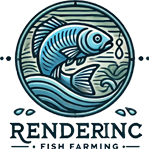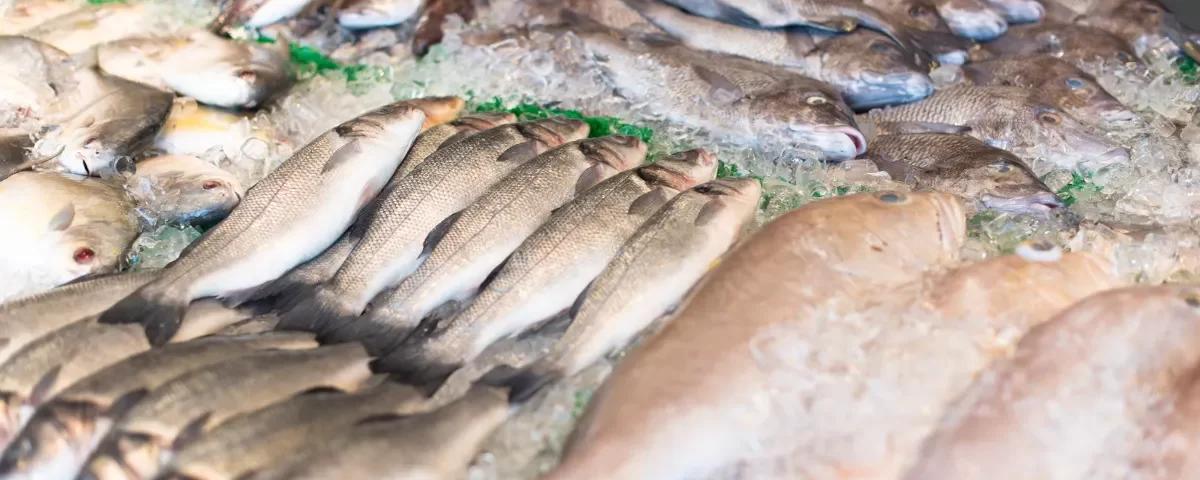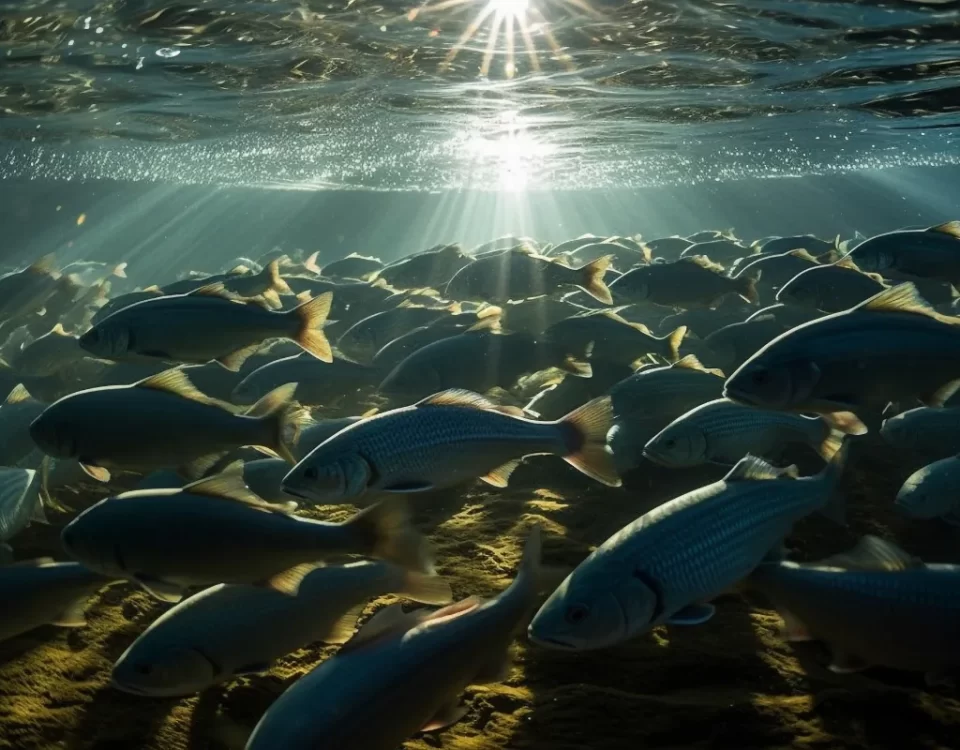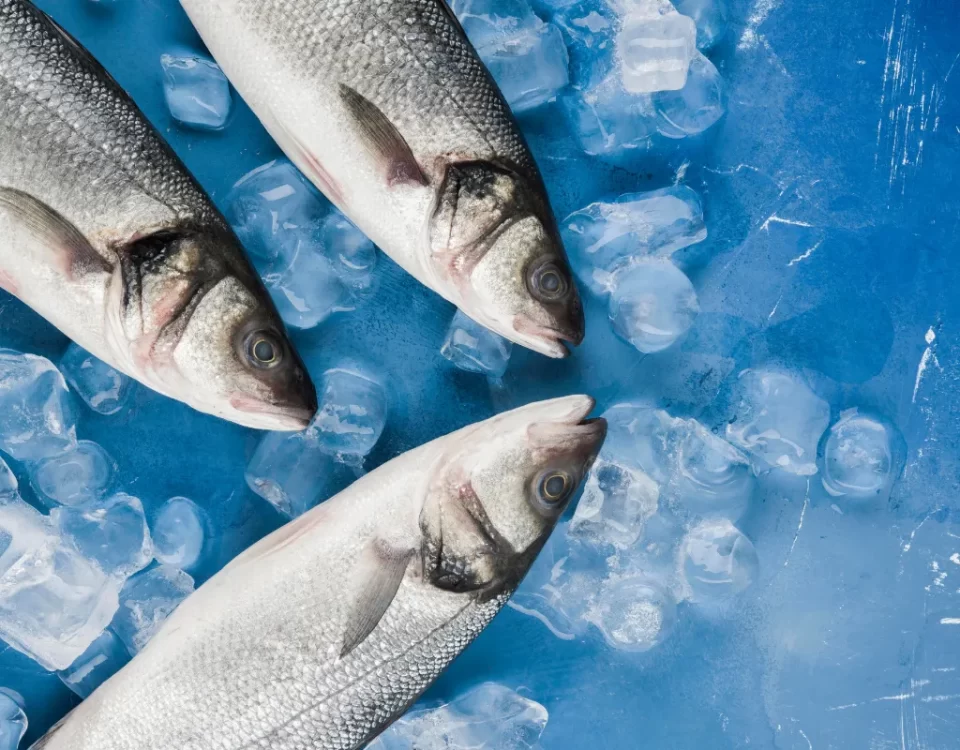The Ultimate Beginner’s Guide to Fish Farming

How to Reduce Mortality Rates in Aquaculture
setembro 8, 2024
Maximizing Yield in Small-Scale Fish Farms
setembro 10, 2024Getting Started with Fish Farming
Fish farming, also known as aquaculture, is the practice of raising fish in a controlled environment for commercial purposes. This method of fish production has been gaining significant popularity in recent years due to the increasing demand for seafood, depletion of wild fish populations, and the potential for sustainable food production. By cultivating fish in captivity, fish farming helps reduce pressure on wild fish stocks and provides a more controlled and efficient way of meeting the growing global demand for seafood.
Types of Fish Farming Systems
There are several types of fish farming systems to choose from, each offering unique advantages and considerations for aspiring fish farmers. The most common types include pond, cage, and tank systems.
- Pond systems involve raising fish in natural or man-made ponds, allowing them to grow in a larger, more natural habitat.
- Cage systems consist of holding fish in floating cages in natural water bodies such as lakes or oceans.
- Tank systems are more controlled environments where fish are raised in tanks or recirculating systems, providing precise control over water quality and environmental conditions.
Key Factors to Consider Before Starting a Fish Farm
Before diving into fish farming, it is crucial to carefully consider several key factors that will significantly impact the success of your operation.
- Location: Choose a suitable location for your fish farm based on access to water sources, proximity to markets, and environmental regulations.
- Water Source: Ensure a reliable and clean water source for your fish farm, as water quality is essential for fish health and growth.
- Market Demand: Research the market demand for the type of fish you plan to cultivate, ensuring there is a viable market for your products.
- Regulatory Compliance: Familiarize yourself with local regulations and permits required for fish farming operations to avoid any legal issues down the line.
By carefully considering these factors and choosing the right fish farming system for your needs, you can pave the way for a successful and sustainable fish farming venture.
Choosing the Right Fish Species
When venturing into the world of fish farming, selecting the right fish species is crucial to the success of your venture. Different fish species have varying growth rates, feeding habits, and environmental preferences, so it’s essential to choose wisely based on your climatic conditions, market demand, and personal preferences.
Overview of Popular Fish Species
Three commonly farmed fish species that are well-suited for beginners include tilapia, catfish, and trout. Tilapia are known for their rapid growth rate and ability to tolerate a wide range of environmental conditions, making them a popular choice among fish farmers. Catfish are also a popular option due to their hardiness and relative ease of cultivation. Trout, on the other hand, require colder water temperatures and higher oxygen levels, making them ideal for certain regions.
Comparison of Growth Rates, Feeding Habits, and Environmental Preferences
Tilapia are fast-growing fish that can reach market size in a relatively short period, typically requiring a diet of commercial fish feed. Catfish, while not as fast-growing as tilapia, are known for their omnivorous diet and can thrive on a variety of feed types, including commercial pellets and natural food sources. Trout, being cold-water fish, have slower growth rates compared to tilapia and catfish, and are typically fed on a diet of pelleted feed and insect larvae.
Factors to Consider in Selection
When deciding which fish species to cultivate, factors such as climatic conditions play a significant role. Some fish species, like tilapia, are more tolerant of warmer temperatures, while others, such as trout, require cooler water. Additionally, market demand should be taken into consideration, as certain fish species may be more sought after in your region. Finally, personal preferences, such as the taste of the fish and the ease of farming, should also be factored into your decision-making process.
In conclusion, choosing the right fish species for aquaculture requires careful consideration of various factors. By understanding the growth rates, feeding habits, and environmental preferences of different fish species, as well as assessing your climate, market demand, and personal preferences, you can make an informed decision that sets you up for success in the world of fish farming.
Setting Up Your Fish Farm
Embarking on the journey of setting up your fish farm requires meticulous planning and a deep understanding of the intricate processes involved. From choosing the right location to implementing water quality management techniques, each step plays a vital role in the success of your venture.
Selecting the Location
First and foremost, carefully select a location for your fish farm that offers ample sunlight and easy access to clean water sources. Ensure the land is suitable for excavation and construction required for the farm setup. Consider environmental factors such as temperature variations and proximity to urban areas to avoid potential pollution risks.
Establishing Water Quality Management
Maintaining optimal water quality is paramount to the well-being of your fish. Implement a robust water quality management system that includes regular testing for pH levels, oxygen content, and ammonia concentration. Invest in filtration systems and aeration equipment to create a suitable habitat for your fish to thrive.
Implementing Feeding Strategies and Disease Prevention
Develop a comprehensive feeding regimen that meets the nutritional needs of your fish species while minimizing waste. Monitor feeding habits closely to prevent overfeeding, which can lead to water contamination and health issues. Additionally, establish disease prevention protocols such as quarantine procedures for new fish arrivals and regular health checks to detect any signs of illness early on.
Managing Stocking Densities and Waste Production
Carefully determine the stocking densities based on the species of fish you intend to raise and the size of your farm. Overcrowding can lead to stress, stunted growth, and increased susceptibility to diseases. Implement efficient waste management systems to minimize environmental impact and maintain water quality. Consider utilizing biofilters, settling tanks, or natural wetlands to process and recycle waste effectively.
Setting up a fish farm requires a harmonious blend of scientific knowledge, practical expertise, and unwavering dedication. By prioritizing water quality management, implementing feeding strategies, and proactively addressing disease prevention, you pave the way for a thriving aquaculture enterprise. Stay vigilant in monitoring stocking densities, waste production, and fish health to ensure a sustainable and prosperous fish farming venture.
Managing Your Fish Farm
Running a successful fish farm requires careful attention to detail and daily maintenance tasks to ensure the well-being of your fish. One of the most crucial daily tasks involves feeding your fish. Providing them with a balanced diet is essential for their growth and overall health. It’s important to feed them the right amount of food at regular intervals, taking into account factors such as water temperature and fish species.
Monitoring water parameters is another vital aspect of managing a fish farm. Regularly testing the water quality for parameters like pH, dissolved oxygen, ammonia, and nitrites is crucial to prevent stress and diseases among your fish. Any fluctuations in these levels should be addressed promptly to maintain a healthy environment for your aquatic livestock.
In addition to daily tasks, regular inspections of your fish’s health are important to catch any issues early on. Look out for signs of disease, abnormal behavior, or physical abnormalities in your fish. By detecting and treating problems early, you can prevent them from spreading and potentially save your fish from harmful outbreaks.
To prevent common issues in fish farming like overcrowding, nutrient imbalances, and disease outbreaks, it’s crucial to implement sustainable practices. Opting for organic feed can reduce the risk of introducing harmful chemicals into your fish farm. Utilizing recyclable water systems not only conserves water but also helps maintain optimal water quality for your fish. Natural pest control methods, such as introducing beneficial insects or plants, can help keep harmful pests at bay without the need for harmful chemicals. By prioritizing sustainable practices, you can create a healthier environment for your fish and contribute to the long-term success of your fish farm.
Marketing and Selling Your Fish
When it comes to marketing and selling the fish you have cultivated with care, there are various strategies you can consider to reach your target customers effectively. One approach is through direct sales, where you sell your fish directly to consumers. This can be done through setting up a roadside stand at your farm, distributing flyers in the local community, or hosting open farm days where visitors can purchase fresh fish on-site.
Farmers’ markets are another excellent avenue for selling your fish. These markets attract a diverse range of customers looking for fresh, locally sourced products. By participating in farmers’ markets, you can connect with buyers who value sustainability and quality. Be sure to display your fish attractively, provide samples for tasting, and engage with customers to share the story behind your farm.
In today’s digital age, online platforms have become a powerful tool for selling products, including fish. Consider setting up an e-commerce website or joining online marketplaces to reach a wider audience beyond your local area. Utilize social media channels to showcase your fish farming practices, engage with potential customers, and drive sales through online promotions and campaigns.
When it comes to building a successful fish farming business, branding, packaging, and customer relationships play crucial roles. Develop a strong brand identity that reflects the values of your farm, such as sustainability, quality, and integrity. Invest in eye-catching packaging that not only preserves the freshness of your fish but also conveys professionalism and attention to detail. Build and nurture relationships with your customers by providing exceptional service, responding to feedback, and establishing trust and loyalty over time.
Pricing your fish competitively is essential to attract customers while ensuring profitability. Consider market prices, production costs, and value-added factors like organic certification or special processing techniques when setting your prices. To expand your market reach, consider forming partnerships with local restaurants, grocery stores, or seafood distributors. By diversifying your sales channels, you can tap into new customer segments and increase your revenue streams. Lastly, focus on maximizing profits by optimizing production efficiency, minimizing waste, and continuously striving for innovation and improvement in your fish farming practices.
Growing Your Fish Farming Skills
Embarking on a journey into fish farming requires more than just basic knowledge; growing your fish farming skills is essential to thrive in this industry. Here are some valuable resources and strategies to aid you in honing your expertise and excelling in fish farming.
Resources for Further Learning
To deepen your understanding of fish farming concepts and techniques, there are a plethora of resources available. Books such as “Aquaculture: Farming Aquatic Animals and Plants” by John S. Lucas and Paul Southgate provide comprehensive insights into aquaculture practices. Online courses, like those offered by universities such as Oregon State University and the University of California, Davis, can offer structured learning experiences on fish farming principles.
Engaging in online forums dedicated to aquaculture, such as Aquatic Network and Fish Farmer Magazine’s discussion board, can facilitate knowledge sharing and networking with experienced fish farmers. These platforms allow you to ask questions, share experiences, and stay updated on industry trends.
Networking Opportunities
Attending conferences such as the Global Aquaculture Alliance’s GOAL Conference and the World Aquaculture Society’s Annual Conference can provide invaluable networking opportunities. These events bring together industry experts, researchers, and fellow fish farmers, allowing you to forge connections and glean insights from established professionals.
Participating in workshops focusing on specific aspects of fish farming, such as water quality management or feed formulation, can enhance your practical skills. Seeking mentorship from seasoned fish farmers enables you to benefit from their experience and guidance, accelerating your learning curve in the industry.
Continuous Improvement
To excel in fish farming, it is crucial to embrace a mindset of continuous improvement. Experimentation with different aquaculture techniques and feedback from industry peers and experts can help you refine your practices and optimize your farm’s performance. Embracing new technologies, such as automated feeding systems and water quality monitoring sensors, can enhance efficiency and productivity on your fish farm.
By continuously learning, adapting, and innovating, you can stay ahead in the dynamic field of fish farming. Remember, success in this industry is not just about acquiring knowledge but also about applying it effectively in your farming operations. Strive for excellence, push your boundaries, and never stop seeking ways to improve your fish farming skills.

Michael Rivers is an experienced aquaculture enthusiast with over a decade of hands-on knowledge in fish farming and sustainable aquatic systems. Passionate about promoting eco-friendly practices, he shares his expertise on fish breeding, water management, and the latest advancements in aquaculture technology. Through his blog, Michael aims to help both beginners and seasoned fish farmers achieve success in their ventures while contributing to the growth of sustainable food production.




